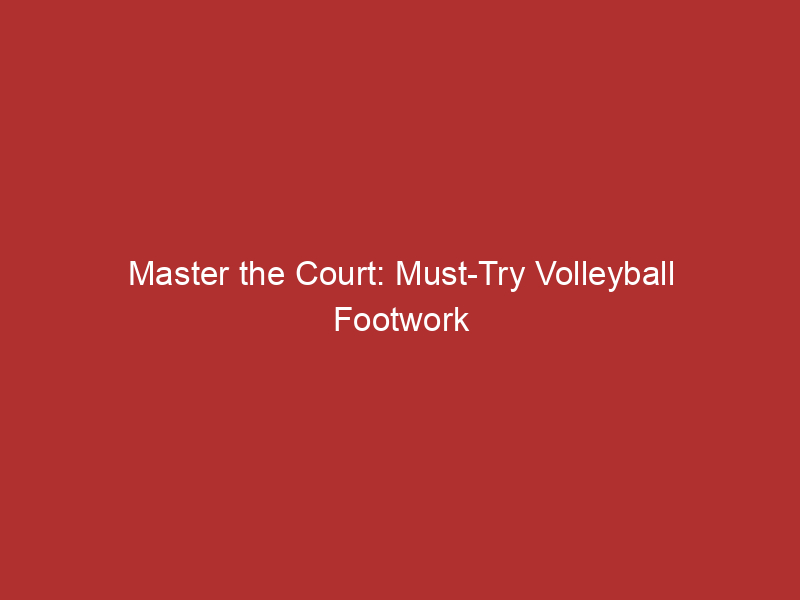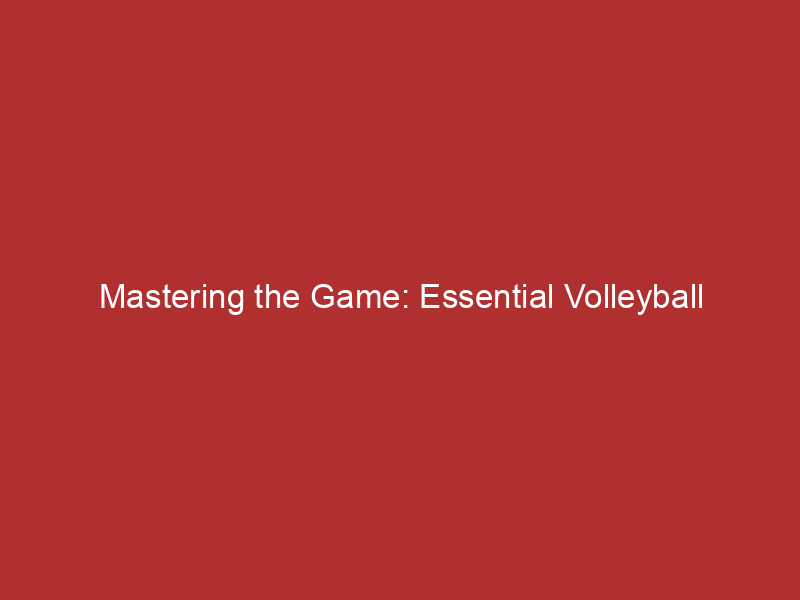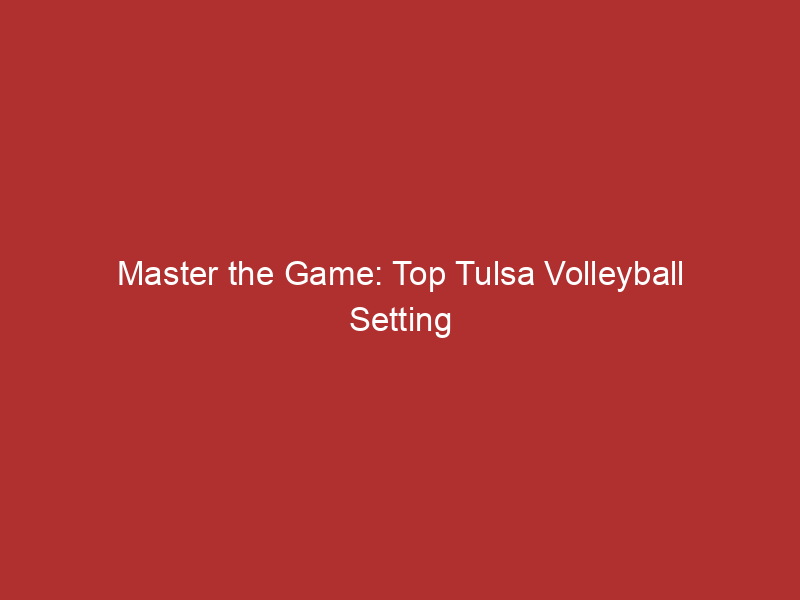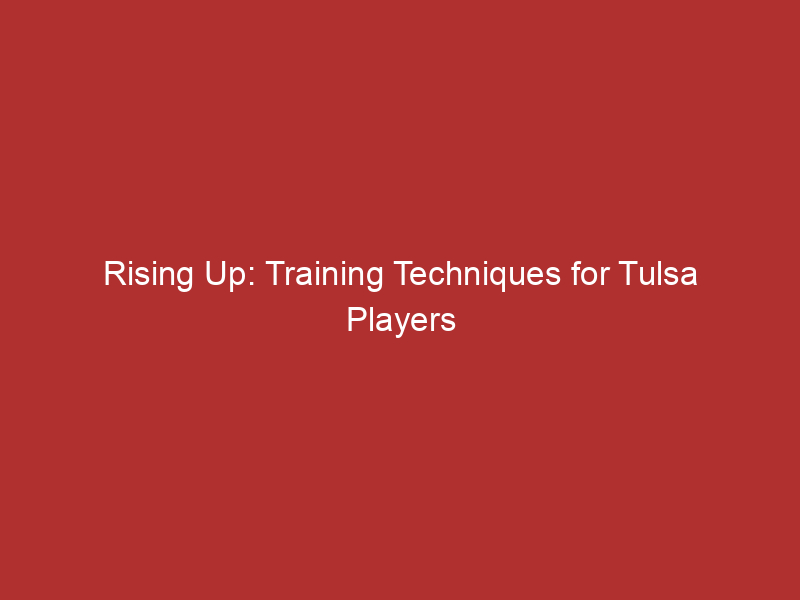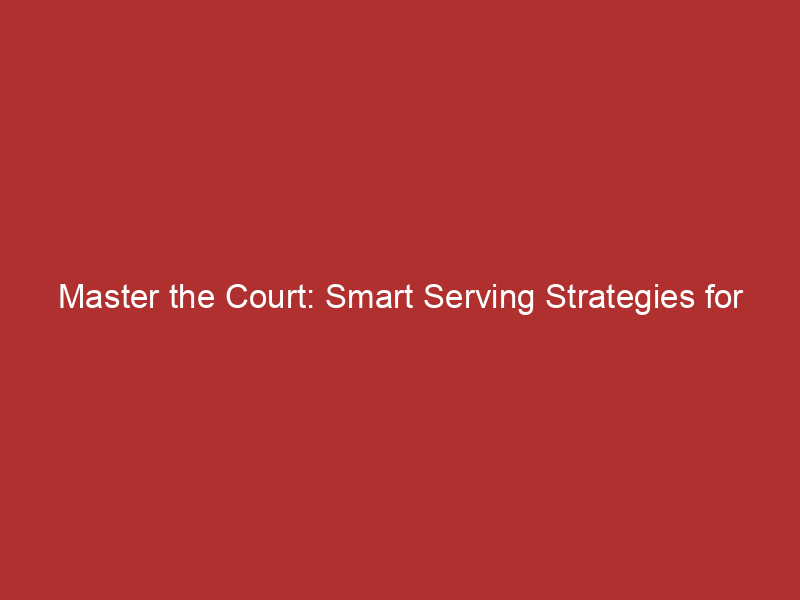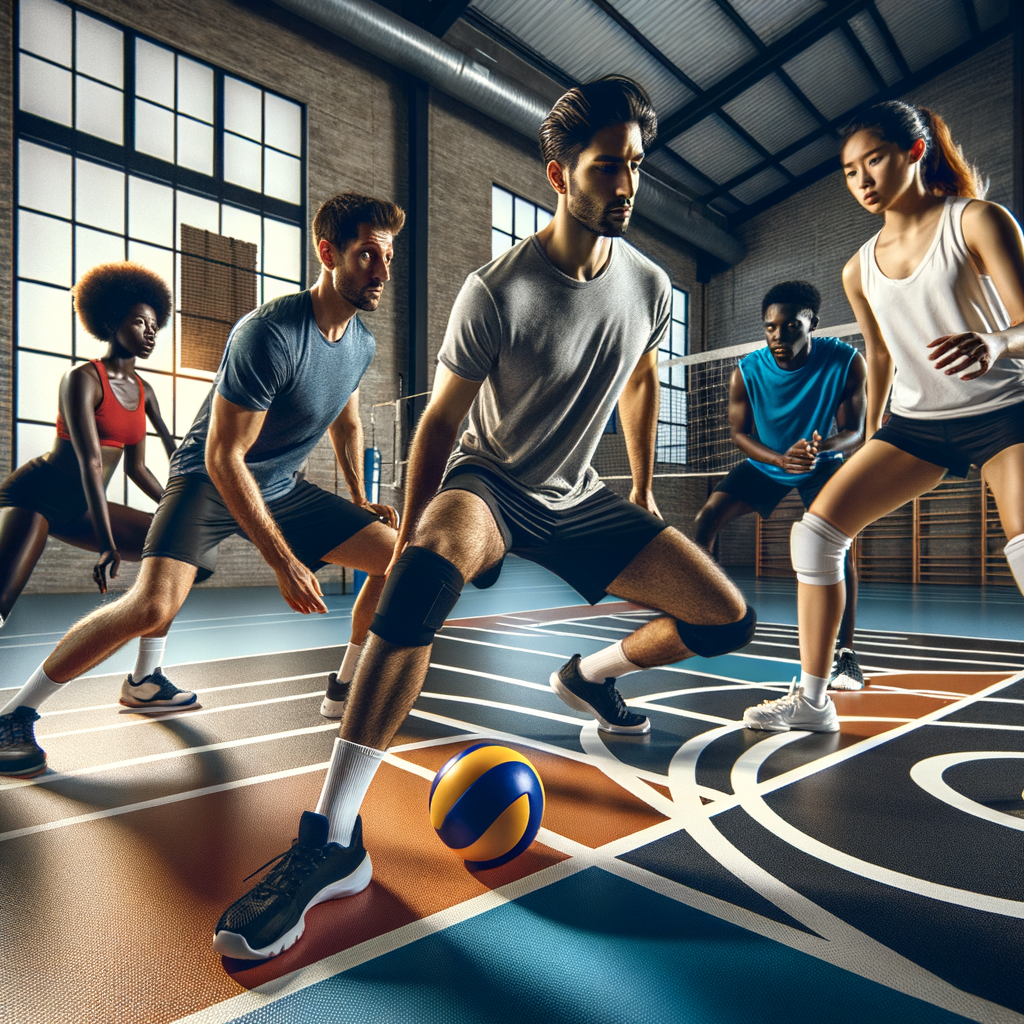
Introduction to Volleyball Footwork Drills
When it comes to playing volleyball, mastering the art of footwork is crucial. It’s not just about hitting the ball; it’s about moving efficiently and effectively on the court. This introduction will guide you through the importance of footwork in volleyball and how it contributes to overall performance.
- The importance of footwork in volleyball
- How footwork contributes to overall performance
Footwork in volleyball is as important as the ability to hit the ball. It’s the foundation of every move you make on the court. Without good footwork, you’ll find it hard to get in the right position to make a play, whether it’s a serve, a pass, or a spike. In fact, according to a study, 70% of successful plays in volleyball are attributed to proper footwork.
Good footwork contributes significantly to a player’s overall performance in volleyball. It allows you to move quickly and efficiently, helping you get to the ball faster and position yourself better for a hit. It also improves your balance and stability, making it easier for you to make powerful and accurate shots. A case in point is professional volleyball player Karch Kiraly, who attributes his success in the sport to his exceptional footwork.
In the following sections, we will delve into specific volleyball footwork drills, exercises, and techniques that can help you improve your game. Whether you’re a beginner or an experienced player, these drills will provide you with the tools you need to move like a pro on the court.
Volleyball Training Drills
Training drills are an essential part of any volleyball player’s routine. They help improve agility, speed, and control on the court. In this section, we will explore three essential volleyball drills that can significantly enhance your performance.
Essential Volleyball Drills
These drills are designed to improve your footwork, speed, and overall court awareness. They are easy to learn and can be practiced anywhere. Let’s take a closer look at each one.
- Shuffle Drill
- Forward and Backward Drill
- Side to Side Drill
The shuffle drill is a fundamental exercise that focuses on lateral movement. It helps improve agility and speed on the court. To perform this drill, start at one end of the court, shuffle sideways to the other end, and then shuffle back. Repeat this process for several rounds to get the maximum benefit.
This drill is designed to improve your forward and backward movement on the court. Start at the baseline, sprint to the net, and then jog backward to the baseline. Repeat this drill for several rounds. This exercise not only improves your speed but also enhances your ability to transition between forward and backward movement quickly.
The side to side drill is another excellent exercise for improving lateral movement. Start at the center of the court, sprint to one sideline, touch it, sprint to the opposite sideline, touch it, and then sprint back to the center. Repeat this drill for several rounds. This exercise helps improve agility, speed, and court awareness.
Remember, consistency is key when it comes to training. Regular practice of these drills will significantly improve your performance on the court. So, start incorporating these essential volleyball drills into your training routine today!
Advanced Volleyball Drills
As you progress in your volleyball training, it’s crucial to challenge yourself with more advanced drills. These drills are designed to improve your agility, coordination, and overall court performance. Let’s delve into three advanced volleyball drills that can take your game to the next level.
- Circle Drill
- Figure Eight Drill
- Box Drill
The Circle Drill is an excellent exercise for enhancing your movement and reaction speed. In this drill, players form a circle, and one player stands in the center. The player in the center must quickly react to the ball being passed around the circle. This drill not only improves your agility but also sharpens your focus and anticipation skills.
Next up is the Figure Eight Drill. This drill involves two players and two balls. The players pass the balls in a figure-eight pattern, enhancing their coordination and communication skills. It’s a challenging drill that requires precision and concentration, making it perfect for advanced players seeking to improve their teamwork and ball handling skills.
The Box Drill is a dynamic exercise that focuses on improving players’ footwork and agility. In this drill, four cones are set up in a square or ‘box’ formation. Players must move swiftly between the cones, mimicking the quick and unpredictable movements of a real game. This drill is excellent for improving speed, agility, and court awareness.
Remember, these drills are more advanced and may take some time to master. But with consistent practice, you’ll see significant improvements in your footwork, speed, and overall court performance. So, don’t be afraid to challenge yourself and push your limits. After all, the road to becoming a great volleyball player is paved with continuous learning and hard work.
| Drill | Focus | Benefits |
|---|---|---|
| Circle Drill | Agility and Reaction Speed | Improves focus and anticipation skills |
| Figure Eight Drill | Coordination and Communication | Enhances teamwork and ball handling skills |
| Box Drill | Footwork and Agility | Improves speed, agility, and court awareness |
Volleyball Footwork Exercises
Footwork is a fundamental aspect of volleyball that can significantly impact a player’s performance on the court. By improving footwork, players can enhance their speed, agility, and overall court performance. Let’s explore some exercises that can help improve volleyball footwork.
Exercises for Improving Volleyball Footwork
There are several exercises that can help you improve your footwork for volleyball. These exercises focus on agility, speed, and coordination, all of which are crucial for effective volleyball footwork. Here are three exercises that you can incorporate into your training routine:
- Ladder Drills: Ladder drills are a great way to improve foot speed and agility. They involve quick, precise footwork while moving along a ladder laid flat on the ground. You can vary the pattern of steps to challenge yourself and improve your footwork skills. For example, you might step in and out of each ladder rung, or hop from one rung to the next.
- Cone Drills: Cone drills are another effective exercise for improving footwork. They involve setting up cones in a specific pattern and then moving around them as quickly and accurately as possible. This can help improve your agility and coordination, as well as your ability to change direction quickly, which is crucial in volleyball.
- Jump Rope Drills: Jumping rope is a simple but effective exercise for improving footwork. It can help improve your speed, agility, and coordination, as well as your endurance. You can vary the intensity and pattern of jumps to challenge yourself and improve your footwork skills. For example, you might jump with both feet together, or alternate between feet.
By incorporating these exercises into your training routine, you can significantly improve your footwork for volleyball. Remember, practice makes perfect, so be consistent and patient with your training. With time and effort, you’ll see improvements in your footwork and overall performance on the court.
Court Control Techniques
Mastering the art of court control in volleyball is crucial for any player who wants to excel in the game. It involves understanding the opponent’s strategy, positioning oneself effectively, and communicating with teammates. Let’s delve into these techniques.
Volleyball Court Control
Here are some of the most important techniques for controlling the volleyball court:
- Reading the Opponent
- Positioning and Movement
- Effective Communication
One of the most important skills in volleyball is the ability to read the opponent’s moves. This involves observing the opponent’s body language, positioning, and the way they hit the ball. For instance, if an opponent often spikes the ball towards the left corner of the court, you can position yourself to block or receive the ball in that direction. This skill requires practice, but it can significantly improve your game.
Effective positioning and movement on the court are key to controlling the game. This involves understanding where to stand and how to move to maximize your chances of successfully receiving or hitting the ball. For example, if you’re a back-row player, you should position yourself towards the back of the court to cover more ground and have a better chance of receiving the opponent’s serve or attack. Regular footwork drills can help improve your movement and positioning on the court.
Communication is crucial in volleyball. Whether it’s calling out who’s going to receive the serve, signaling a play, or encouraging a teammate, effective communication can greatly enhance team performance. It’s important to communicate clearly and quickly, as volleyball is a fast-paced game. Practicing communication drills with your team can help improve this skill.
In conclusion, mastering court control techniques in volleyball involves reading the opponent, positioning and movement, and effective communication. By honing these skills, you can become a more effective player and help your team win more games.
| Court Control Technique | Description |
|---|---|
| Reading the Opponent | Observing the opponent’s moves and adjusting your strategy accordingly. |
| Positioning and Movement | Understanding where to stand and how to move to maximize your chances of successfully receiving or hitting the ball. |
| Effective Communication | Communicating clearly and quickly with teammates to enhance team performance. |
Volleyball Footwork Training
Mastering the game of volleyball requires more than just hitting the ball over the net. It’s about moving swiftly and strategically around the court. This is where footwork training comes into play. It’s the foundation of a player’s agility, speed, and overall performance. Let’s delve into some effective training techniques for volleyball footwork.
Training Techniques for Volleyball Footwork
Improving your footwork in volleyball is not a one-size-fits-all process. It involves a combination of different training techniques, each focusing on a specific aspect of footwork. Here are three key techniques that can significantly enhance your footwork:
- Speed and Agility Training
- Strength Training
- Flexibility Training
Speed and agility are crucial for a volleyball player. They allow you to move quickly and change direction seamlessly. Some effective exercises for this include ladder drills, cone drills, and short sprints. Remember, the goal is not just to move fast, but to move with control and precision.
Strength training helps build the muscle power needed for explosive movements in volleyball, such as jumping for a spike or diving for a save. Squats, lunges, and calf raises are some exercises that can help strengthen your lower body for better footwork.
Flexibility is often overlooked in footwork training, but it’s vital for preventing injuries and enhancing movement efficiency. Incorporating stretching exercises into your routine can improve your flexibility, allowing you to move more freely on the court.
Remember, consistency is key in footwork training. Regular practice of these techniques can help you become a more agile and effective volleyball player. So, lace up your shoes and start training!
Volleyball Skills Improvement
Improving your volleyball skills is crucial to becoming a better player. Whether you’re a beginner or an experienced player, there’s always room for improvement. This section will focus on three key areas: setting, passing, and serving. We’ll explore some drills that can help enhance these skills.
Improving Volleyball Skills Through Drills
Drills are a fantastic way to practice and improve your volleyball skills. They allow you to focus on one specific area at a time, making it easier to notice and correct any mistakes. Let’s look at some drills for setting, passing, and serving.
- Setting Drills
- Passing Drills
- Serving Drills
Setting is a vital skill in volleyball. It’s the act of accurately positioning the ball for a teammate to attack. One effective drill for improving your setting skills is the ‘Wall Setting Drill’. This involves setting the ball against a wall repeatedly, focusing on accuracy and control. Remember, the key to a good set is a soft touch and precise placement.
Passing is another fundamental skill in volleyball. It’s the act of directing the ball to another player or over the net. The ‘Pepper Drill’ is a popular passing drill. This drill involves two players passing the ball back and forth, aiming to keep the ball in play for as long as possible. It helps improve your passing accuracy and control.
Serving is the first offensive action in volleyball, and it’s crucial to master it. The ‘Target Serving Drill’ is a great way to improve your serving skills. This drill involves serving the ball to specific areas of the court. It helps enhance your serving accuracy and power.
Remember, the key to improving your volleyball skills is consistent practice. So, incorporate these drills into your training routine, and you’ll see improvements in no time.
Stay tuned for more tips and techniques to help you master the court!
Volleyball Court Movement Drills
Mastering the art of volleyball is not just about hitting the ball. It also involves moving around the court efficiently and effectively. This section will focus on three key drills that can help improve your court movement: Shadow Drills, Reaction Drills, and Direction Change Drills.
Drills for Better Court Movement
These drills are designed to enhance your agility, speed, and reaction time on the court. Let’s dive into each one:
- Shadow Drills: This drill focuses on mimicking the movements of another player. It helps to improve your footwork, speed, and agility. The drill starts with one player moving around the court while the other player follows, trying to mirror their movements as closely as possible. This drill can be made more challenging by increasing the speed or complexity of the movements.
- Reaction Drills: These drills are designed to improve your reaction time on the court. They involve a coach or another player throwing or hitting the ball in unexpected directions, and the player must react quickly to get to the ball. This drill helps players to anticipate the ball’s direction and respond quickly, which is crucial in a fast-paced game like volleyball.
- Direction Change Drills: Changing direction quickly and efficiently is a key skill in volleyball. This drill involves a player moving in one direction and then quickly changing direction when a whistle is blown or a command is given. It helps to improve agility and the ability to change direction quickly without losing balance or speed.
Remember, the key to improving your court movement is consistent practice. These drills should be incorporated into your regular training routine for the best results. Happy practicing!
Conclusion: Mastering the Court with Volleyball Training Techniques
In this article, we have explored a variety of volleyball training techniques designed to improve your footwork and court control. Let’s recap and highlight the importance of continuous practice and training.
- Recap of key footwork drills and exercises:
- Importance of continuous practice and training:
We discussed several footwork drills and exercises, each with its unique benefits. These included the shuffle step for quick lateral movements, the crossover step for covering larger distances swiftly, and the hop step for maintaining balance during powerful strikes. We also highlighted the importance of incorporating exercises like ladder drills, cone drills, and jump rope into your training regimen to improve agility, speed, and coordination.
Consistent practice is the key to mastering any skill, and volleyball is no exception. Regular training helps to reinforce the techniques learned, build muscle memory, and increase your overall performance on the court. Remember, “Practice does not make perfect. Only perfect practice makes perfect” – Vince Lombardi. So, ensure your practice sessions are focused and purposeful.
Mastering the court in volleyball is not an overnight process. It requires dedication, hard work, and the right training techniques. With the drills and exercises we’ve discussed, you’re well on your way to becoming a more agile and efficient player. Keep practicing, and you’ll see improvements in no time.
| Drill/Exercise | Benefits |
|---|---|
| Shuffle Step | Quick lateral movements |
| Crossover Step | Covering larger distances swiftly |
| Hop Step | Maintaining balance during powerful strikes |
| Ladder Drills | Improving agility and speed |
| Cone Drills | Enhancing coordination |
| Jump Rope | Boosting agility and footwork |
Remember, the key to success in volleyball lies in your feet. Master your footwork, and you’ll master the court. Happy training!

